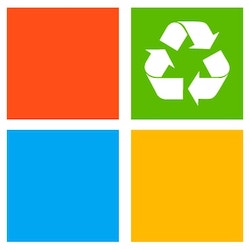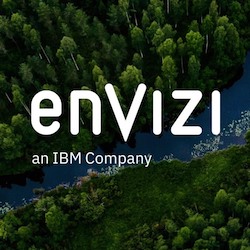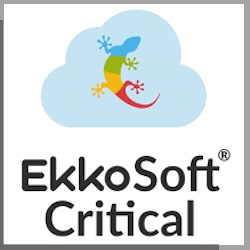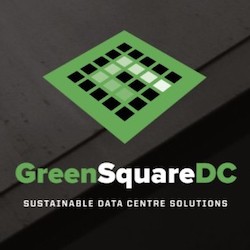Welcome to our glossary -- our regularly updated dictionary and encyclopedia of various sustainability terms and definitions. If you submit a term for our glossary, we will typically review the submission and decide whether to publish it within five businesses. Thank you for your readership.
There are currently 37 sustainability terms in this directory
B Corp CertificationB Corp Certification is a designation that a business is meeting high standards of verified performance, accountability, and transparency on factors from employee benefits and charitable giving to supply chain practices and input materials. In order to achieve certification, a company must:
- Demonstrate high social and environmental performance by achieving a B Impact Assessment score of 80 or above and passing our risk review. Multinational corporations must also meet baseline requirement standards.
- Make a legal commitment by changing their corporate governance structure to be accountable to all stakeholders, not just shareholders, and achieve benefit corporation status if available in their jurisdiction.
- Exhibit transparency by allowing information about their performance measured against B Lab’s standards to be publicly available on their B Corp profile on B Lab’s website.
Source: B Lab
BiodegradableBiodegradable refers to substances or objects that can be broken down by bacteria or other living organisms. Be careful with this term because it doesn’t always mean the product is good for the environment. A biodegradable product can produce harmful materials as it breaks down. For example, some biodegradable plastics produce methane as they decompose in landfills—and it’s a far more potent greenhouse gas than carbon.
Source:
Natalie Lowe, CMM, CRL, a sustainable meeting professional with 30 years of experience.
Building Management System (BMS)The global market for BMS will reach $5.15 billion by 2026 from $3.52 billion in 2021, which represents a 7.9% compound annual growth rate, according to Frost & Sullivan’s BMS market forecast. BMS systems typically include electric systems monitoring; HVAC (heating, ventilation and air conditioning); central fume collection & vacuum systems; technical steam system; hot water system and central heating; chilled water system; sprinkler system for fire safety; and more.
Carbon Credits (aka Carbon Offsets)Carbon credits, also known as carbon offsets, are permits that allow the owner to emit a certain amount of carbon dioxide or other greenhouse gases. One credit permits the emission of one ton of carbon dioxide or the equivalent in other greenhouse gases, Investopia reports. The carbon credit is half of a so-called cap-and-trade program. Companies that pollute are awarded credits that allow them to continue to pollute up to a certain limit, which is reduced periodically, the report said. Meanwhile, the company may sell any unneeded credits to another company that needs them, Investopia reports.
Carbon NeutralityCarbon neutrality is a state of net-zero carbon dioxide emissions. This occurs when carbon dioxide (CO2) emissions are fully reduced and offset. This typically means only CO2 is neutralized, not other greenhouse gases.
Carbon sinkCarbon sink is any system that absorbs more carbon than it emits. The main natural carbon sinks are soil, forests and oceans.
CDP (Carbon Disclosure Project)CDP is a not-for-profit charity that runs the global disclosure system for investors, companies, cities, states and regions to manage their environmental impacts. The world’s economy looks to CDP as the gold standard of environmental reporting with the richest and most comprehensive dataset on corporate and city action.
Chain of CustodyThe chain of custody is a process that tracks all steps in a supply chain for a product, including suppliers, transporters, exporters, processors, manufacturers, OEMs, and brands. Its goal is to improve the supply chain traceability of products, and to prove the claims and attributes of sustainable materials, according to
Circularise.
Circular EconomyA circular economy challenges us to rethink how we source, design, manufacture, transport, use, repair and recycle everything.
Climate Action 100+Climate Action 100+ is an investor-led initiative to ensure the world's largest corporate greenhouse gas emitters take necessary action on climate change. The group told members in February 2024 that its approach
does not breach U.S. antitrust and securities law, Reuters reported. At the time, the group was seeking to shore up support days after
the shock exit of several large firms, Reuters noted.
CompostableCompostable refers to organic material that can be placed in compost for rapid breakdown. Some materials require hot composting to destroy harmful pathogens (usually animal products).
Source:
Natalie Lowe, CMM, CRL, a sustainable meeting professional with 30 years of experience.
COP (Conference of Parties)The Conference of Parties (COP) is the UNFCCC’s highest decision-making body. COP holds annual meetings in the context of climate change and proposes climate-related goals and solutions each year. UNFCCC is the United Nations Framework Convention on Climate Change.
Corporate Sustainability Reporting Directive (CSRD)On 5 January 2023, the
Corporate Sustainability Reporting Directive (CSRD)EN••• entered into force. This new directive modernizes and strengthens the rules concerning the social and environmental information that companies have to report. A broader set of large companies, as well as listed SMEs, will now be required to report on sustainability – approximately 50,000 companies in total. EU law requires all large companies and all listed companies (except listed micro-enterprises) to disclose information on what they see as the risks and opportunities arising from social and environmental issues, and on the impact of their activities on people and the environment.
Source:
European Commission
DERMS (Distributed Energy Resources Management System)A distributed energy resources management system (DERMS) is a platform which helps mostly distribution system operators (DSO) manage their grids that are mainly based on distributed energy resources (DER). By lack of a common definition, a DERMS thus – depending on your point of view – is something similar or even identical with a
Virtual Power Plant (VPP).
On some key aspects, people seem to agree: DERMS is a software platform that is used to organize the operation of the aggregated DER within a power grid. The usual DERMS application is found at the distribution grid level. DERMS typically require a more full-fledged integration of various other systems such as a distribution management system (DSM) for integrating it with a utility. Furthermore, an outage management system (OMS) or a supervisory control and data acquisition (SCADA) system is usually needed to provide all DERMS functionality.
Source:
Next Kraftwerke
Direct Air Capture (DAC)
Direct air capture (DAC) is a technology that uses chemical reactions to pull carbon dioxide out of air. When air moves over these chemicals, they selectively react with and trap CO2, allowing the other components of air to pass through. Source: World Resources Institute
Downstream SolutionsDownstream solutions are responses to a problem after it has occurred. They focus on treating effects rather than causes. Examples of downstream solutions are recycling, waste management, and reuse of materials. In stark contrast, upstream solutions are preventative strategies to avoid a problem. For planners, this might include eliminating plastics and managing food supply to avoid the need for extensive waste management at an event. Upstream solutions require strategic thinking and operational changes but can relieve the cost and time burdens of addressing downstream consequences.
Source:
Natalie Lowe, CMM, CRL, a sustainable meeting professional with 30 years of experience.
E-WasteWhat is E-waste? The definition involves electronic products that are unwanted, not working, and nearing or at the end of their “useful life.” Computers, televisions, VCRs, stereos, copiers, and fax machines are everyday electronic products, the Great Lakes Electronics Corporation notes.
EmissionsEmissions are gases produced as a by-product of a chemical reaction. These can be naturally occurring, like methane from cattle, or man-made, from the burning of fossil fuels, for example.
Source: Natalie Lowe, CMM, CRL, a sustainable meeting professional with 30 years of experience.
ESG (Environmental, Social and Governance)ESG stands for environmental, social, and governance. It refers to a standard of corporate responsibility that includes addressing climate change (e.g., waste reduction and energy efficiency), the social good of the business (e.g., fair pay, equal employment opportunities, and community contributions), and a rigorous standard of ethics in an organization\'s business practices.
Source:
Natalie Lowe, CMM, CRL, a sustainable meeting professional with 30 years of experience.
European Green DealThe European Commission in December 2019 presented the European Green Deal, its flagship plan that aims to make Europe climate neutral by 2050.
European Green Digital Coalition (EGDC)
German Supply Chain Due Diligence Act (LkSG)The act went into force on January 1, 2023.
According to the Library of Congress: The Supply Chain Due Diligence Act’s objective is to safeguard human rights and the environment in the global economy more effectively. It obligates companies with 3,000 or more employees in Germany to take “appropriate measures” to respect human rights and the environment within their supply chains “with the goal to prevent or minimize risks related to human rights or the environment or end the violation of duties related to human rights or the environment.” (Supply Chain Due Diligence Act art. 1, §§ 1, 3.)
Greenhouse Gases (GHGs)Greenhouse gases, also called GHGs,
absorb infrared radiation in the atmosphere and trap heat. GHGs include, but are not limited to, water vapor, carbon dioxide (CO2), methane (CH4), nitrous oxide (N2O), chlorofluorocarbons (CFCs), hydrochlorofluorocarbons (HCFCs), ozone (O3), hydrofluorocarbons (HFCs), perfluorocarbons (PFCs), and sulfur hexafluoride (SF6).
Source:
Natalie Lowe, CMM, CRL, a sustainable meeting professional with 30 years of experience.
GreenwashingGreenwashing is misrepresenting actions as being more environmentally sound than they are. While greenwashing can be accidental, it usually refers to presenting a green public image that is misleading.
Source:
Natalie Lowe, CMM, CRL, a sustainable meeting professional with 30 years of experience.
LEED (Leadership in Energy and Environmental Design)Leadership in Energy and Environmental Design, or LEED, certifications are given to buildings that meet standards that conserve energy, water, waste and other environmental goals, The Wall Street Journal notes.
MicrogridsMicrogrids replace expensive, carbon-intensive electricity purchased from the grid with clean, self-generated and environmentally-friendly power sourced as solar photovoltaics (PV). Battery storage further increases the flexibility of PV usage, which lowers costs and reduces carbon emissions. Savings can also be made by leveraging advanced system controls and smart algorithms to optimize the operation of the local energy plant and determine whether and when energy should be used or stored. Furthermore, by helping to ensure facilities are provided with a consistent supply of power in the event of grid outages or extreme weather events, microgrids enhance energy resilience.
Sources:
Schneider Electric and
GreenYellow,
Net ZeroNet zero means that emissions from an activity are reduced as much as possible, and then offset, resulting in net-zero emissions released into the atmosphere.
Source:
Natalie Lowe, CMM, CRL, a sustainable meeting professional with 30 years of experience.
Science Based Targets initiatives (SBTi)The Science Based Targets initiative (
SBTi) drives ambitious climate action in the private sector by enabling organizations to set science-based emissions reduction targets, the organization says. The SBTi is the lead partner of the
Business Ambition for 1.5°C campaign -- a call to action from a
global coalition of UN agencies, business and industry leaders, mobilizing companies to set net-zero science-based targets in line with a 1.5°C future.
Scope 1 EmissionsWhat are Scope 1 Emissions? The definition: Scope 1 covers emissions from sources that an organization owns or controls directly – for example from burning fuel in our fleet of vehicles (if they’re not electrically-powered), according to National Grid.
Scope 2 EmissionsWhat are Scope 2 Emissions? The definition: Scope 2 are emissions that a company causes indirectly when the energy it purchases and uses is produced. For example, for our electric fleet vehicles the emissions from the generation of the electricity they're powered by would fall into this category, according to National Grid.
Scope 3 EmissionsWhat are Scope 3 Emissions? The definition: Scope 3 encompasses emissions that are not produced by the company itself, and not the result of activities from assets owned or controlled by them, but by those that it’s indirectly responsible for, up and down its value chain. An example of this is when we buy, use and dispose of products from suppliers. Scope 3 emissions include all sources not within the scope 1 and 2 boundaries, according to National Grid.
SEC: The Enhancement and Standardization of Climate-Related Disclosures for InvestorsThe Securities and Exchange Commission (“Commission”) is proposing for public comment amendments to its rules under the Securities Act of 1933 (“Securities Act”) and Securities Exchange Act of 1934 (“Exchange Act”) that would require registrants to provide certain climate-related information in their registration statements and annual reports. The proposed rules would require information about a registrant's climate-related risks that are reasonably likely to have a material impact on its business, results of operations, or financial condition. The required information about climate-related risks would also include disclosure of a registrant's greenhouse gas emissions, which have become a commonly used metric to assess a registrant's exposure to such risks. In addition, under the proposed rules, certain climate-related financial metrics would be required in a registrant's audited financial statements.
SustainabilitySustainability is meeting the needs of the present without diminishing the ability of future generations to meet their needs. Sustainability also means that human practices do not result in the permanent damage, alteration, or depletion of the environment, ecosystems, species, or natural resources.
Source:
Natalie Lowe, CMM, CRL, a sustainable meeting professional with 30 years of experience.
Sustainable Hospitality AllianceThe
Sustainable Hospitality Alliance brings together engaged hospitality companies and uses the collective power of the industry to deliver impact locally and on a global scale. Formerly the International Tourism Partnership, we work with leading hospitality companies and strategic partners to address key challenges affecting our planet and its people, and develop practical resources and programs to enable the wider industry to operate responsibly and grow sustainably. Aligned with the United Nations Sustainable Development Goals (SDGs), we commit to drive continued action on human rights, youth employment, climate action and water stewardship.
UNFCCCWhat is UNFCCC (the United Nations Framework Convention on Climate Change)? The United Nations body was formed in 1992 to lend support to the global response to the dangers posed by climate change.
Source:
Natalie Lowe, CMM, CRL, a sustainable meeting professional with 30 years of experience.
United Nations Sustainable Development Goals (UNSDGs)United Nations Sustainable Development Goals, or UNSDGs, are a collection of 17 global goals adopted by the United Nations General Assembly in 2015. From “affordable and clean energy” and “gender equality” to” “climate action” and “zero hunger,” the UN aims to hit its targets by 2030.
Upstream SolutionsUpstream solutions are preventative strategies to avoid a problem. For planners, this might include eliminating plastics and managing food supply to avoid the need for extensive waste management at an event. Upstream solutions require strategic thinking and operational changes but can relieve the cost and time burdens of addressing downstream consequences.
Source:
Natalie Lowe, CMM, CRL, a sustainable meeting professional with 30 years of experience.
Submit a sustainability term



